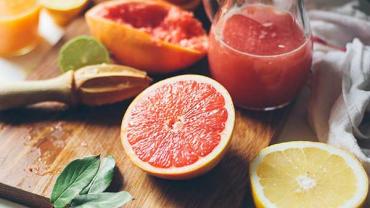
In 2016, a two-and-a-half-year-old boy was diagnosed with scurvy as a result of extremely picky eating and subsisting on nothing but chocolate milk and graham crackers. In the same year, in Spain, an 11-month-old baby was identified as having scurvy owing to being fed an almond milk formula and refusing offered pureed fruits and vegetables after displaying an apparent sensitivity to cow milk formula. Vitamin C deficiencies of this magnitude aren’t something most medical professionals would expect to encounter, but they’re important to be aware of because the consequences can be devastating, yet they’re so easy to correct.
Even in people consuming omnivorous diets that contain adequate amounts of fresh vegetables and fruits to provide ample vitamin C, suboptimal vitamin C levels aren’t out of the question. Few people are aware of this, but vitamin C and glucose compete for absorption, and intracellular availability of the transportable form of vitamin C (dehydroascorbate, or DHA) might be impaired by hyperglycemia and/or insulin resistance. In fact, researchers have speculated that microscopic damage to blood vessels that is one of the hallmarks of diabetes could actually be a result of local ascorbate deficiency.
Evidence suggests that hyperglycemia can induce ascorbate deficiency. Glucose and dehydroascorbic acid both enter mammalian cells via facilitative glucose transporters (GLUT-1), and uptake of glucose inhibits uptake of DHA. Researchers have posited that this may be why some studies show little or no benefit from oral supplementation with ascorbic acid: these studies did not control for dietary glucose load. They go further and suggest that in cases where vitamin C supplementation is indicated, it may be prudent to supplement in conjunction with a reduction in dietary carbohydrate, to increase the likelihood that the vitamin C will elicit the intended effect(s).
Indeed, there’s evidence that very low carbohydrate or ketogenic diets may reduce the requirement for vitamin C. By maintaining generally lower levels of blood glucose, there’s less competition for cellular uptake of vitamin C. Additionally, animal studies show that ketogenic diets increase mitochondrial glutathione levels and glutathione peroxidase activity. Glutathione helps recycle or “spare” ascorbate, so increased glutathione levels could, in theory, reduce the need for increased exogenous ascorbate. Ketogenic diets may also increase uric acid levels. While this is sometimes seen as a negative thing (owing to correlations between elevated uric acid and occurrence of gout attacks), uric acid isn’t always an enemy. It’s actually a powerful antioxidant in its own right—at least as powerful as vitamin C itself. Humans and other higher primates lack the ability to synthesize vitamin C, and we also lack functional uricase, the enzyme that breaks down uric acid. It’s possible these are related, and that uric acid may perform some of the same antioxidant actions.
Diets that are very low to nearly absent in fresh vegetables and fruits do not always induce scurvy, provided they are not high in other carbohydrates. The famous experiment of Arctic explorers Vilhjalmur Steffanson and K. Anderson showed that after nearly an entire year of consuming solely animal flesh and fat, the men showed no signs of scurvy. In addition to potentially reducing the need for vitamin C owing to less dietary glucose intake, it’s possible this type of diet provides enough pre-formed carnitine, hydroxyproline and hydroxylysine to contribute to additional reduced requirement for vitamin C. (Vitamin C is a cofactor in the synthesis of these compounds, critical for transport of fatty acids into mitochondria for oxidation, and for collagen synthesis, respectively).
Some of this is speculation, but it’s interesting to consider that for as much as is known about the key effects of vitamin C in the immune system, there’s clearly a lot more to learn about lesser-known properties of this “antiscorbutic” nutrient.